Pioneering works in biochar research, Japan
Makoto Ogawa A and Yasuyuki Okimori B CA Department of Environmental Engineering, Osaka Institute of Technology, 5-16-1 Omiya, Asahi-ku, Osaka 535-8585, Japan.
B Environment Department, The General Environmental Technos Co., Ltd, 1-3-5 Azuchimachi, Chuo-ku, Osaka 541-0052, Japan.
C Corresponding author. Email: okimori_yasuyuki@kanso.co.jp
Australian Journal of Soil Research 48(7) 489-500 https://doi.org/10.1071/SR10006
Submitted: 5 January 2010 Accepted: 23 June 2010 Published: 28 September 2010
Abstract
In Asian countries, people have a long history of using rice husk charcoal or wood ash as an agricultural soil amendment, but evidence of this has been long obscured. Since the 1980s, microbiological studies, mainly on symbiotic organisms, have been performed in Japan. Charcoal is a porous material with high water and air retention capacities and high alkalinity. Therefore, it stimulates root growth and enhances the infection of various symbiotic microbes to plant partners. The use of carbonised materials in agriculture, forestry, and construction will contribute to the sustainability of crop production, soil conservation, and carbon sequestration. Biochar-related research accumulated mainly in Japan is reviewed.
Additional keywords: rice husk charcoal, wood charcoal, wood vinegar, root nodule bacteria, arbuscular mycorrhiza, ectomycorrhiza, carbon sequestration.
Introduction
In Asian countries, intensive agriculture has been popular since ancient times because of high population density and limited available land. Therefore, various traditional cultivation techniques were developed to raise the productivity of crops, especially rice. Any organic wastes, human and livestock excretions, straw, leaf litter, grass, sewage, rice husk charcoal, and wood ash were employed as fertilisers and soil conditioners, not only in agriculture but also for gardening.
Rice husk charcoal and various kinds of ash were important materials for soil amendment and mineral supply. The oldest description of charcoal use in agriculture is in a textbook of sorts entitled ‘Nogyo Zensho’ (Encyclopedia of Agriculture) written by Yasusada Miyazaki in 1697 (Miyazaki 1697). He writes: ‘After charring all waste, concentrated excretions should be mixed with it and stocked for a while. When you apply this manure to the fields, it is efficient for yielding any crop’. This manure has been called ‘ash manure’. Probably, similar manure has been used in East Asia since ancient times, because the description has been cited from an even older text published in China.
It would seem that rice husk charcoal has been used since the beginning of rice cultivation in Asia (i.e. for several thousand years), although rice husk charcoal was not utilised in compost because rice husks, being high in silica content, decompose only slightly in soil and compost. Such traditional crop production supported by organic fertilisers and charcoal seems to be a typical, sustainable agricultural system, and has a much longer history than that of ‘terra preta’ in the Amazon (Glaser et al. 2002).
Forest resources such as firewood and charcoal were major energy sources for daily life in Japan until the beginning of 20th Century. Charcoal production by traditional kiln was a popular industry and reached a maximum of 2.7 million t (tonnes) per year in 1947 (Matsutake Kenkyu Konwakai 1982). It has been estimated that ~10 million t of wood from broadleaf trees was carbonised annually in Japan at the height of charcoal production. This wood charcoal was very valuable as a fuel and was never used in agriculture. Only wood ash containing some cinders was applied in agriculture for soil improvement and mineral supplement.
However, due to the rapid change in sources of energy from forest products to fossil fuels in the 1960s, the production of charcoal decreased to a low of ~30 000 t per year in the 1980s. Changes in people’s daily lives and the weakened relationships between humans and forests caused abrupt disruptions in forest ecosystems, inducing outbreaks of pine wilting disease (Ogawa 1978).
Under such circumstances, S. Kishimoto and G. Sugiura, whose expertise was in charcoal and wood vinegar production, began a movement to revive charcoal and to encourage new uses of charcoal, publishing a book: ‘Introduction to Sunday Charcoal Making’ (Kishimoto and Sugiura 1980). They contributed considerably towards the present prosperity of the charcoal business in Japan and Asia. At the request of S. Kishimoto and G. Sugiura, M. Ogawa and his colleagues began studies on the utilisation of charcoal in agriculture and forestry in 1980 and reported the effects of bark charcoal on soybean cultivation and pine tree rehabilitation in 1983 (Ogawa et al. 1983a, 1983b). S. Kishimoto and G. Sugiura proposed the idea that charcoal was useful as a soil conditioner (Kishimoto and Sugiura 1985).
After publication of these works, the practical use of charcoal, including rice husk charcoal, became more widespread. In 1986, the ‘Technical Research Association for Multiuse of Carbonized Materials’ (TRA) was established with government support, and studies on the multiuse of charcoal and wood vinegar were performed, including improvement of carbonisation technology, soil amendments in agriculture and forestry, activation of microorganisms, and water purification. Research results with some general comments were published in 1990 (Technical Research Association for Multiuse of Carbonized Materials 1990).
Thanks to that report, the effects of charcoal and wood vinegar were publicly recognised and authorised as a specific material for soil amendment by the Ministry of Agriculture, Forestry and Fisheries (MAFF) in 1984. The effect of this new direction for charcoal use was seen in increased consumption of charcoal in Japan, as shown in Fig. 1. The conventional use of charcoal as fuel decreased continually until the 1980s, after which the overall consumption of charcoal has been increasing since 1990, but about half of this has been exported from South East Asia where it is produced from coconut and oil palm shells. At present, wood charcoal is being used mainly in agriculture, greening, tree rehabilitation, humidity control in house construction, water purification, and sewage treatment (Fig. 2). In Japan, the total amount of non-fuel charcoal consumption has reached ~40 000 t per year.
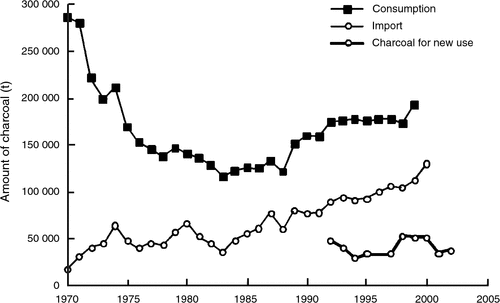
|
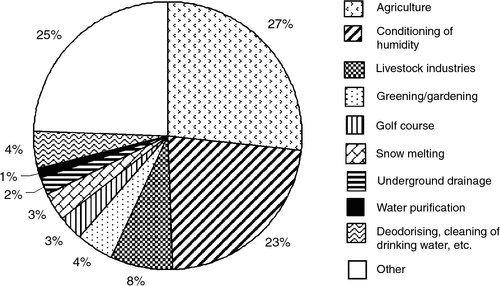
|
Charcoal utilisation in agriculture
Rice husk charcoal
In Asian countries, rice husk charcoal, which can be carbonised by simple methods in the field soon after harvesting, has been one of the most common materials for soil amendments. A traditional rice husk charcoal-making method is shown in Fig. 3. Even now in East Asian countries, this is a very popular technique for making rice husk charcoal and it is used on farm land and in nursery potting.
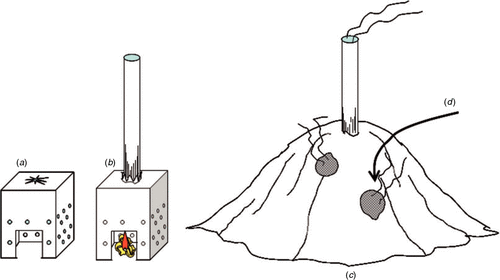
|
The practice of using rice husk charcoal mixed with excreta had been very popular in wheat cultivation until about 100 years ago. There were double benefits, which are that the charcoal can absorb and retain chemical nutrients as well as deodorise excreta. However, this method was so commonplace for local people that scientists rarely paid enough attention to investigating it. This led to the role of charcoal in agriculture being neglected for a long time. After the information on wood charcoal use was circulated in the 1980s, the role of rice husk charcoal was again recognised and investigated by agricultural researchers.
The effects of rice husk charcoal on the formation of arbuscular mycorrhiza of citrus seedlings were reported by Ishii and Kadoya (1994). Other researchers reported that non-carbonised and carbonised rice husks enhanced arbuscular mycorrhiza formation of some crop plants by improving the physical soil properties when each material was added to the topsoil (Ezawa et al. 2002). It was also suggested that a small amount of rice husk charcoal could increase the growth of Catharanthus roseus, but the browning of leaves appeared with excessive application because of the higher concentrations of potassium and higher pH level in rice husk charcoal than wood charcoal (Komaki et al. 2002). A practical method was proposed to reduce the outflow of pesticides and herbicides from paddy fields by utilising the adsorbing ability of rice husk charcoal (Takagi and Takanashi 2003). Another study mentions immobilising bacteria with high pesticide decomposition ability into rice husk charcoal and successfully reducing the outflow of simazine from golf course runoff (Takagi and Yoshida 2003). These techniques may be useful for reducing injury due to continuous cultivation with chemicals. It was confirmed from these results that rice husk charcoal with a porous structure has a function similar to wood charcoal despite the different physical properties and chemical composition.
Carbonising methods have developed from the traditional method to the use of sophisticated facilities at rice mills. Dried rice husk can be carbonised automatically and continuously in a self-fuel kiln and the extra heat can be utilised for small-scale power generation (Kansai Sangyo Co. Ltd 1991). It is conceivable that this automatic carbonisation technology is applicable to wheat and barley chaff and other crop plant residues.
In South East Asia, the use of charcoal in agriculture has been promoted primarily by Japan International Cooperation Agency (JICA). In Indonesia, Igarashi (1996) performed cultivation experiments for crop plants with rice husk charcoal. He applied charcoal together with magnesium, phosphate, and lime, and tried to rotate crops of soybean and maize. His results indicated that charcoal application significantly enhanced root nodule formation, plant growth, and yields (shown in Fig. 4); subsequently, the effect was also sustained in the second crop of maize without fertilisers, and residual effect was observed up to the tenth rotation. In particular, the growth and yield of maize treated with charcoal was greater than that in the control plot cultivated with chemical fertilisers only. He also applied charcoal at several sites with different soil conditions and observed that the effect might depend on soil properties and crop types (Igarashi 2002). Since publication of these experimental results, charcoal use has expanded in Indonesia.
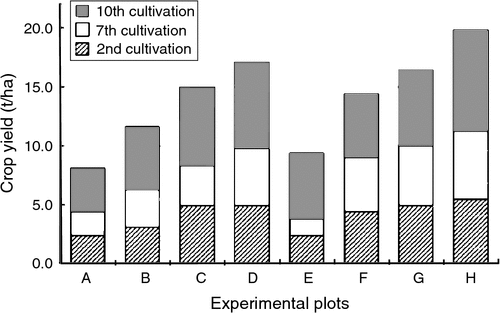
|
Another research group reported the changes in the chemical properties of soil and crop yields with the application of bark charcoal of Acacia mangium made from bark waste from a pulp factory (Yamato et al. 2006). The charcoal was applied as a soil amendment for the cultivation of maize, cowpea, and peanut in Sumatra, Indonesia. The yields of maize and peanut increased significantly with charcoal application even under a lower rate of fertiliser in an infertile acidic soil. The amount of root and colonisation rate of arbuscular mycorrhiza increased especially in maize. Root nodule formation in leguminous plants was also stimulated by charcoal. Application of charcoal improved the chemical properties of soil by neutralising soil pH and increasing total nitrogen and available phosphate contents, cation exchange capacity, exchangeable cations, and base saturation. Moreover, it induced a decrease in exchangeable Al ions, which are harmful for root growth. These phenomena have been confirmed in other areas (Steiner et al. 2007).
In Thailand, the effects of rice husk charcoal application on soybeans were investigated in an infertile sandy soil (Oka and Rungrattanakasin 1993). Those authors reported that above-ground biomass, root biomass, soybean yield, and rate of nitrogen fixation in the soil increased significantly. In crop fields, application of 10 t/ha was most efficient and the effect appeared evident in the second (sorghum) and third (soybean) crops. Physical properties, porosity, water retention capacity, pH, and CEC of the soil also improved, although the changes varied with soil type.
In the Philippines, the effect of rice husk charcoal on the growth of beans in an infertile acidic red soil was confirmed (Noguchi et al. 1993). In this experiment, rice husk charcoal at 2.5 t/ha and lime at 1.5 t/ha were applied and mixed with topsoil to a depth of 0.15 m. Chemical fertiliser was then broadcast and root nodule bacteria were inoculated. The number of root nodules and nitrogen fixation rates increased in the plot with lime and increased further with charcoal addition. Inoculation with root nodule bacteria and application of rice husk charcoal induced the same effect with a single use of lime.
Wood charcoal
Studies on biochar in Japan began with wood charcoal. In 1983, Ogawa et al. (1983a) reported that bark charcoal powder containing a small amount of chemical fertiliser was efficient for arbuscular mycorrhiza and root nodule formation in soybean plants. The final results of this study were reported in 1986 (Ogawa and Yambe 1986). The experimental design is indicated as follows: bark charcoal of broad-leaved trees was mixed with 1% (w/w) of inorganic fertiliser (N-P-K (8-8-8)), urea, super lime phosphate, ammonium sulfate, and rapeseed meal, respectively. These charcoal fertilisers were stocked for 1 week and scattered over the soil surface at 500 g/m2 (5 t/ha) and 1500 g/m2 (15 t/ha) each before ploughing. Control plots treated with 100 g/m2 (1 t/ha) and 200 g/m2 (2 t/ha) of inorganic chemical fertiliser (in conventional cultivation soybeans) and without any treatment were prepared. Finally, soybean seedlings without root nodules were planted in each plot.
Soybean yields harvested from the plots with charcoal fertilisers of 500 g/m2 (5 t/ha) were mostly equal to those from the control plots of chemical fertiliser only, as shown in Table 1. That is, the amount of chemical fertiliser used could be reduced markedly. Root nodule formation was stimulated by charcoal fertilisers, but was suppressed by ammonium sulfate and compound fertiliser (Fig. 5). Figure 6 shows the results for root nodule and arbuscular mycorrhiza formation, which increased in the plots treated with charcoal fertilisers (Yambe and Ogawa 1987). Straight charcoal application was not effective for plant growth and microbial propagation. Therefore, it is certain that increased growth of soybean plants resulted from the enhanced root growth and high activity of symbiotic microorganisms.
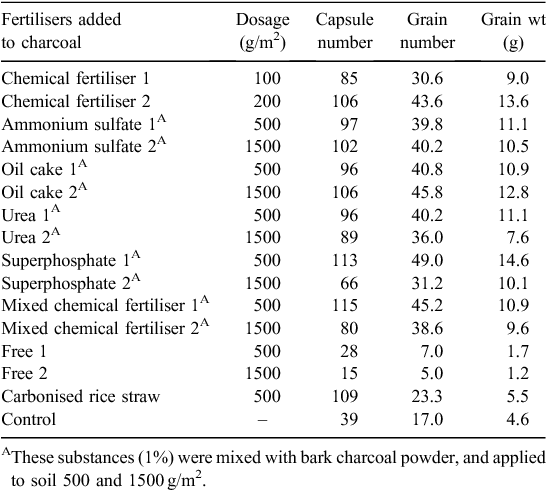
|
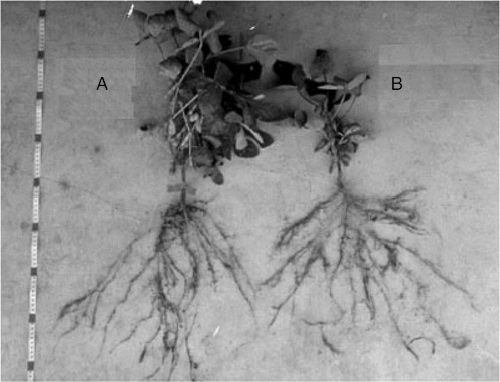
|
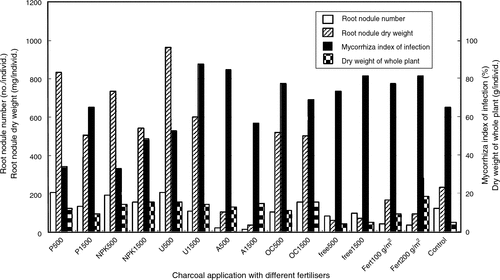
|
Soil microbial flora showed significant change according to charcoal fertiliser application. Charcoal fertilisers with pH >8 inhibited propagation of soil fungi but enhanced that of bacteria and Actinomycetes soon after treatment; there was a gradual return to pre-application state after 2 months. It was hypothesised that emission of carbon dioxide was temporarily increased due to high activity of saprophytic bacteria.
At the same time, the free-living nitrogen-fixing bacteria could be isolated on nitrogen-free medium. From the inoculation test of the charcoal, which was sterilised and buried in soil for 1 week, it was demonstrated that the charcoal became the habitat for root nodule bacteria.
These research results were also confirmed in the TRA report. Wood charcoal could improve soil properties, but mixtures with chemical fertilisers, zeolite, wood vinegar, and organic fertiliser gave better results than charcoal alone on tea plants, citrus, and vegetables (Ishigaki et al. 1990), rice and apple trees (Okutsu et al. 1990), and some leguminous plants and grasses (Sano et al. 1990).
Root nodule bacteria could often be immobilised in white and hard charcoal with fine pores. Keeping this in mind, Takagi (1990) proposed a method to make inoculums of root nodule bacteria of leguminous plants utilising charcoal. On the other hand, arbuscular mycorrhizal fungi showed better growth on black charcoal which was carbonised at 400−500°C (Fig. 7). Spores of Gigaspora margarita were formed in black volcanic ash soil with high carbon content (Soda and Shigemitsu 1990). The application of wood charcoal to plants associated with Frankia was also effective for actinorhiza formation (Aiba et al. 1990).
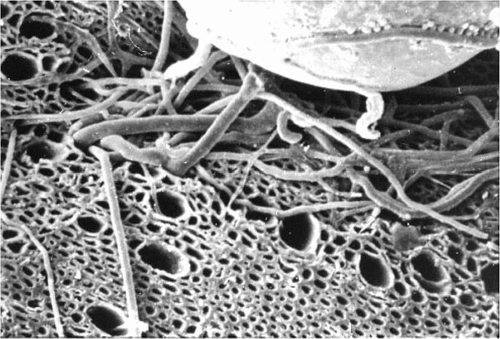
|
After the TRA study, Oohira et al. (1992) reported that oak charcoal, with finer pores than that of pine, was more suitable for immobilisation of bacteria and Actinomycetes than that of pine. The immobilising ability of pine charcoal could be improved by mixing it in acetic acid. Matsubara et al. (2002) reported that coconut shell charcoal innoculated with arbuscular mycorrhizal fungi was effective in suppressing the soil-borne pathogen infection by Fusarium sp.
These research results of charcoal use in various fields were distributed not only in Japan but also in other Asian countries (Ogawa 1987, 1991, 1994).
Charcoal compost and wood vinegar
In Asia, compost making from litter and excretions has been common for a long time. Ash or carbonised material was essential to accelerate decomposition, stimulating bacterial activity and neutralising acidity. It is also well known that charcoal absorbs smells and liquid.
In the 1980s, a private company invented a method to produce charcoal compost made from fresh chicken dung and palm-shell charcoal (King Coal Co. Ltd 2006). In the process of compost making, the more charcoal that is used, the faster the decomposition progresses via exothermic reaction. Under aerobic conditions, the Bacillus group became dominant, producing antibiotics, and these antibiotics were effective in suppressing root diseases and inhibiting the growth of some soil-borne pathogens such as Pythium, Rhizoctonia, Phytophtra, and Fusarium (Kobayashi 2001). At present, this charcoal compost has been sold as a biological fungicide. Following this instance, various kinds of organic compost made from other livestock excretions and charcoal have been sold commercially.
Wood vinegar is a liquid byproduct obtained from the carbonisation process by cooling the smoke emissions with air or water. It had been used in forestry nursery beds as a pesticide and on roadsides as a herbicide for a long time. Kishimoto (1997) recommended the use of wood vinegar in agriculture, forestry, animal husbandry, and food processing, describing the methods for purification, distillation, and filtration.
This liquid contains volatile substances emitted through pyrolysis; the water-soluble fraction is wood vinegar and the oily fraction is wood tar. The chemical composition is different depending on the raw materials used. The major chemical components of broad-leaved trees are water (81%), acetic acid (8–10%), methanol (2.44%), acetone (0.56%), and soluble tar (7%), while conifers are rich in water and acetic acid (3.5%), but other concentrations are comparably lower than that of broad-leaved trees (Yatagai 1990). The chemical components of wood vinegar containing many organic substances are unstable, so it has been sold as a material complex.
It has been recognised since the 1960s that wood vinegars extracted from broad-leaved trees are more efficient for the growth and rooting of various plants than those of conifers. The effects were confirmed also in the TRA study (Hayashi 1990; Ishii et al. 1990; Nogi 1990). Concentrated wood vinegar with high acidity can kill microorganisms, plants, and some larvae, but the diluted form stimulates rooting, plant growth, and microbial propagation. There are many reports of wood vinegar application in practice and generally the effects are well known by users, but there are few scientific reports available on the mechanisms associated with the chemical properties.
Charcoal powder had been commonly used to cure the intestinal disorders of animals. In the 1980s, the use of charcoal and wood vinegar extended into the fields of animal husbandry and fish aquaculture. In the 1970s, a wood vinegar maker invented a tablet of charcoal powder containing wood vinegar and sold it as a medicine for animals. This was formally recognised by MAFF (Kishimoto 1997).
Charcoal utilisation in forestry
Rehabilitation of trees by charcoal and mycorrhiza
In 1980, Ogawa et al. (1983b) and Ogawa (1983) applied bark charcoal powder with a small amount of chemical fertiliser to a young stand of Pinus thunbergii prompting root growth and mycorrhiza formation. The mycorrhizal fungus Rhizopogon rubescens, which is an edible and dominant mycorrhizal species associated with pines, could be cultivated. Chemical fertilisers (urea, ammonium sulfate, super lime phosphate, and synthetic chemical fertiliser) were added to bark charcoal powder at 0.1–1.0% (w/w), respectively. After removing the secondary roots, these materials were applied to the pines by burying them in trenches measuring 0.30 m in depth and width and then covering with sand. Fresh roots regenerated inside charcoal layers 3 months later, and after applying a small amount of phosphate, mushrooms appeared abundantly along the trenches 9 months later. After a year, the amount of pine root and mycorrhiza in the charcoal increased considerably. The growth of shoots and colour of needles improved over those before treatment. This may have been caused by the enhanced uptake of nutrients and water absorption by increased mycorrhizal formation. The water content in the charcoal was considerably higher (40%) than that in sand (5%) in the dry season (Ogawa 1992).
After publishing the experimental results, similar phenomena were confirmed and the method improved by many researchers. For example, Hirasa (1992) devised a growing method for seedlings with the mycorrhiza and a field cultivation method.
The same method has been widely accepted by professional gardeners and applied to various tree species to revive famous old trees in shrines, temples, and parks as shown in Fig. 8. Usually, the charcoal powder, maximum 10 mm in diameter, has been buried in a trench or hole together with a small amount of phosphate fertiliser and the spores of suitable mycorrhizal fungi for the host plant. Sometimes, the root system is exposed by removing topsoil and covered by charcoal powder as well. Charcoal fertiliser is also used in nurseries to improve soil properties and to inoculate mycorrhizal fungi (Ogawa 2007).
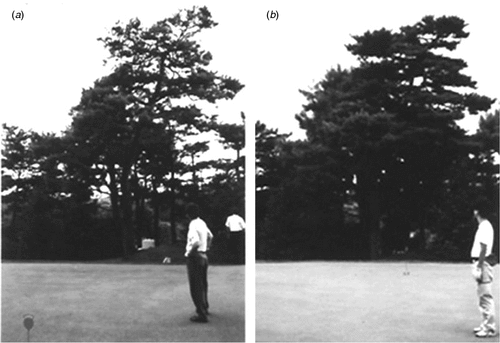
|
Pine wilting disease caused by insects and nematodes has been spreading severely in Japan. Most of the Pinus densiflora and Pinus thunbergii forests have been destroyed in the last 100 years. Seacoast pine forests have an important role in preventing natural disasters, so practical rehabilitation methods have been eagerly awaited in rural areas.
Ectomycorrhiza formation is essential for the survival and growth of Pinus species. In general, pine trees grow as a pioneer plant in devastated areas having infertile soil, and mycorrhizal fungi prefer to inhabit the same soil conditions as that of the host plant. Therefore, it is well known from experience and research that man-made pine forests should be kept at the primary stage of plant succession by removing all under-story shrubs and by raking out the litter layer. At present, the author proposes to rehabilitate and reforest coastal pine forests using charcoal and mycorrhizal fungi, as detailed in a monograph (Ogawa 2007). In this project, pine seedlings with the mycorrhizal fungi Rhizopogon, Pithoritus, and Suillus species were planted together with charcoal powder and phosphate in sand dunes. The survival rates and growth of these seedlings were always much higher than those without mycorrhiza and charcoal.
Charcoal use for reforestation of tropical rain forest
In Indonesia in 1989 it was found that Dipterocarpaceae form ectomycorrhizae with mycorrhizal fungi, among which Scleroderma columnare enhanced the seedling growth efficiently in nurseries and that a small amount of charcoal (2% in volume) stimulated the growth of Shorea species and mycorrhiza formation (Ogawa 2006). A practical inoculation method was subsequently devised in which several saplings with the mycorrhizae are planted inside nursery beds and the pots are set under a canopy. By this method the mycelia of mycorrhizal fungi penetrate through holes in the pot and infect naturally (Kikuchi and Ogawa 1999). Another group found that rice husk charcoal is also effective and convenient to use in inoculation of dipterocarp seedlings. Rice husk charcoal was not found to be harmful, even if it was added excessively (Mori and Marjenah 2000).
Another nursery technique to inoculate mycorrhizal fungi with charcoal was also used in a pine forestation project in Northern China and successful results were obtained (Takami 2003). It can be expected that charcoal will be useful in semi-arid land farming such as date palm plantation and greening to stop desertification (Ogawa 1998).
Trials of carbon sequestration through charcoal use in agriculture and forestry
Developing the charcoal industry
The total amount of waste wood derived mainly from construction has reached 4.6 million t per year in Japan, but because of environmental legal restrictions against incineration, only 60% of it can be used domestically. Therefore, some construction companies have switched from incineration to carbonisation and intended to use the charcoal not only in agriculture but also for humidity control in houses and buildings. The function of charcoal in humidity control was studied several decades ago (Abe et al. 1996; Nakano et al. 1996). Recently, construction companies have begun to spread bags of charcoal not only under floorboards but also in spaces above ceilings (Kitamura et al. 2005). Meanwhile it was also reported that this treatment was efficient in reducing asthma and atopic dermatitis by diminishing the population of moulds and ticks (Morita 2005; Taketani 2006).
Other raw materials for charcoal range from waste wood to some flammable substances. Among them the carbonisation and utilisation of bamboo has been widely recognised as one way to manage bamboo forests which are in a wide range in south-west Japan. Bamboo charcoal, with somewhat different structure and functions from wood charcoal, has been used for the purification of water and air.
Until several years ago, all garbage from urban centres had been burned in incineration plants, but now some cities carbonise the garbage and try to utilise it. However, there are several problems to be solved, because the water content in garbage is usually so high that it consumes too much energy for desiccation and some products are unsuitable for agricultural use because of the high concentration of heavy metals and salt (Abe et al. 2001). Therefore, thermal electric power plants have been used to try to burn the garbage charcoal by mixing it with coal or oil. The wastes disposed from food processing and livestock excretions have also been carbonised and used in agriculture with compost (Shinogi 2003).
With the development of charcoal utilisation, carbonisation technology is developing from the simple kiln to automatic mass production facilities. Newly devised carbonisers including various kinds of movable batch type kiln, rotary kiln, swing kiln, etc., have been sold for mass production of waste wood charcoal. In some cases the excess gas has been used for thermal electric power generation. At the same time, studies to establish industrial standards for carbonised materials have started, triggering a renewal of the charcoal industry in the 21st Century.
‘Carbon Sequestration by Forestation and Carbonisation (CSFC project)’
In 1991, the author proposed an idea to sequester carbon via charcoal production (Ogawa 1991). The basic concept is that carbon dioxide emitted into air can be fixed through photosynthesis by newly planted trees and if the waste wood resultant from their harvest can be carbonised and used in agriculture and other fields, a vast amount of carbon will be stored for the long term in the soil, and at the same time sustainable production of crops and trees will be achieved.
After COP3 (The 3rd Session of the Conference of the Parties to the United Nations Framework Convention on Climate Change), Ogawa and his colleagues proposed the idea ‘Carbon Sequestration by Forestation and Carbonisation (CSFC project)’ (Ogawa 1998, 1999). In South East Asia, large-scale plantations of Acacia mangium, rubber tree, and oil palm are expanding after clear cutting of natural forest, and still now slash–burn fields are spreading over a wide area. Therefore, more efficient techniques for soil amendment to sustain high productivity are needed (Glaser et al. 2002). As described above, the population of free-living, nitrogen-fixing bacteria increases in soils in which charcoal is buried (Ogawa 1994). It is hypothesised that a small amount of nitrogen is accumulated in the soil by charcoal application as well as by ‘slash and burn’ techniques. Therefore, charcoal use may become one of the most reliable and low-cost procedures in tropical countries.
On the other hand, if charcoal is easily weathered (oxidised) in the field, the idea may be meaningless. Nevertheless, it has been exhibited that charcoal 1000 or more years old has remained without weathering in the ruins of an ancient mint and in old tombs in Japan and Korea.
The durability of wood charcoal against ozone was examined and the half-life of the charcoal was estimated (Kawamoto et al. 2005). The weight of sawdust charcoal carbonised at 400°C was not affected from exposure to 8.5% ozone, while charcoal made at 1000°C burned after exposure to 4.9% ozone. Minute pores were observed on the surface of the charcoal carbonised at 1000°C. It was concluded that the half-life of charcoal carbonised at 1000°C and treated with ozone in air was ~50 000 years. From these results it is suggested that wood charcoal is stable on a geological time-scale. However, there is a little information on the durability, i.e. how long the charcoal can be preserved in agricultural field with frequent tillage.
According to these results, a CSFC feasibility study was conducted with an existing project being performed at an industrial plantation and pulp production facility in Sumatra, Indonesia as an example of a Clean Development Mechanism project (Okimori et al. 2003). The CSFC scheme (previously called CFC) is shown in Fig. 9. It was estimated that 368 000 t/year of biomass residue and waste which were disposed from the plantation and pulp mill could be transformed into 77 000 t/year of charcoal, if conventional charcoal producing methods are used. It was also expected that the carbon emission reduction by the project could reach up to 62 000 t C/year (or 230 000 t CO2). In addition, this project contributed to the local economy by providing employment for 2600 people and to making the operation more sustainable by amending the plantation soils with charcoal.
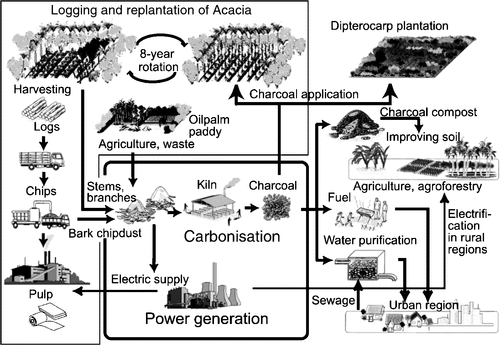
|
The research results of a similar, smaller scale trial conducted in Indonesia as a JICA project were also reported (JICA 2002). In this project it was confirmed that applications of charcoal were effective both for seedling growth of Acacia and tree growth in the field.
In Western Australia, a multipurpose project involving a Mallee eucalyptus plantation was carried out by the Oil Mallee Co. in order to prevent the salinisation of arable soil (Shea 1999). Another feasibility study was conducted as part of the project together with the Oil Mallee Co. (Ogawa et al. 2006), proposing to carbonise wood waste and to use the charcoal as a soil amendment in wheat fields. It was thought that the total carbon sink would reach 1 035 450 Mg C with 14% of the carbon in above-ground biomass, 33.1% in below-ground biomass, and 52% in charcoal in the soil if the plantation was maintained for 35 years. Meanwhile, the effects of eucalyptus leaf and stem charcoal on the growth and yield of wheat were identified (Blackwell et al. 2007).
As summarised in Ogawa et al. (2006), a feasibility study of carbon sequestration in which various kinds of waste wood from construction, saw mills, trimmed branches, and others were recycled by carbonisation was conducted by the Research Institute of Environment and Industry. It focused on the effective use of surplus heat from a garbage incinerator for carbonising woody materials. It was postulated from the study that waste wood of 936.0 Mg C/year would be converted into a net carbon sink of 298.5 Mg C/year by carbonisation, with the fixed carbon recovery of the system being 31.9%.
Life cycle assessment has also been conducted in Japan on the carbonisation of waste wood and the use of charcoal for construction and growing grass. In these studies, the CSFC project was certified as being significant and useful for carbon sequestration and in carbon and energy balance over the whole cycle (Senoo et al. 2008).
From these research results, it is expected that CSFC projects will be recognised as a concrete, easy, and low-cost counter measure when global warming intensifies in the near future. Today, charcoal uses in various fields are growing through the release of technical information and the charcoal production industry is growing as a green business in East Asia.
Recent trends and perspectives
Taking into account the authors’ 20+ years of experience with charcoal production and use, there are some problems to be solved in order to promote the agricultural use of biochar. One problem deals with the effects in practice and another with the price and cost performance.
The effects of biochar application on harvests are not as big as the users commonly expect, particularly in developed countries where chemical fertilisers, herbicides, and pesticides have been used abundantly for a long time. Moreover, the effects of charcoal application seem to be more evident in infertile tropical soil than in temperate regions. It should be stressed that positive effects in plant growth from biochar are most certainly related to soil infertility, existence of free-living, nitrogen-fixing bacteria, and various symbiotic microorganisms that are abundant in infertile soil with a few chemicals. These microorganisms are usually able to thrive with biochar application. It is necessary for biochar advocates to increase the number of case studies not only in agricultural use, but also in various fields like forestry in order for biochar to be authorised as a soil conditioner and a method for carbon sequestration.
The price of charcoal, especially wood charcoal, is higher than that of chemical fertilisers or composts. Therefore, farmers dislike using wood charcoal in their fields, though they know its effects on crops. Rice husks are one of the cheapest materials for biochar production, but the effect are not so significant and the carbon content is less than that of wood charcoal. Furthermore, financial investments are needed for charcoal mass production facilities and in the transportation of vast amounts of raw materials from large areas. As a result, CO2 emissions resulting from the consumption of fossil fuels increases in addition to the CO2 emissions during the carbonising process.
In Japan, charcoal businesses focusing on agricultural uses for charcoal were expected to grow significantly after scientific studies were performed in the 1980s by the Technical Research Association for Multiuse of Carbonized Materials and others, but the market has stagnated since the mid-1990s. Moreover, cheaper charcoals such as palm shell charcoal have been imported abundantly in recent years and share half of the domestic market. At present, there is no expectation that this tendency will change in the near future.
It is postulated that the sustainability of agriculture and forestry will be jeopardised in the near future because of increases in human population in developing countries and the technological development of renewable energy production utilising biomass. We will inevitably have to shift our agricultural system from the chemical-dependent, large-scale systems common in developed countries to intensive agriculture systems in which a continuous production of food and feed are maintained, supported by organic farming with compost and biochar.
Now we are recommending the use of charcoals which are produced from harmless waste wood, bamboo, thinned trees in man-made forest, and wilted trees by simple carboniser technologies, such as the ‘Smokeless Carbonizing Kiln’ made from a stainless steel ring (Moki Co. Ltd 2008). In Kameoka City, in the suburbs of Kyoto, people including children make charcoal on a small scale and apply it to their own fields and gardens for organic farming led by the research groups of Ritsumeikan University (Shibata 2009) and Ryukoku University (Tomino 2008). The vegetables cultivated from those fields have begun to be sold under a special trademark: ‘Cool Vegetables.’ Through this movement local people, government, and private enterprise are able to join in the environmental activity.
Growing plants and burying biochar in the soil is a significant and practical method for carbon sequestration and it simultaneously contributes to the prevention of natural disasters (massive erosion, disease outbreaks, etc.) and conservation of ecosystems (Okimori et al. 2003). In particular, forestation is essential for fixing carbon dioxide that has already been emitted into the atmosphere. Biochar application to forest soil free from human disruption is a long-term carbon sink considering the stability of biochar carbon in soil (Ogawa et al. 2006). In the past 10 years, it has been recognised internationally that carbonisation in combination with agriculture is a meaningful counter measure against global warming (Lehmann et al. 2006; Lehmann 2007; Lehmann and Joseph 2009). However, the raw materials for carbonisation in this project must be limited only to harmless waste, because it is feared that charcoal production on a large scale will induce deforestation and land degradation as in the cases of biomass energy development.
Acknowledgments
Most of research reports cited in this review are written in Japanese. As it seemed difficult for foreigners to access them, we tried to introduce mainly the summaries of pioneer work. The authors thank Dr P. S. Blackwell and Mr S. McGreevy for their cooperation and appreciate their helpful comments on the English manuscript.
Abe I,
Hitomi M,
Ikuta N,
Kawafune I,
Noda K, Kera Y
(1996) Humidity control capacity of microporous carbon. Journal of Urban Living Health 3(6), 333–336 [in Japanese].

Ezawa T,
Yamamoto K, Yoshida S
(2002) Enhancement of the effectiveness of indigenous arbuscular mycorrhizal fungi by inorganic soil amendments. Soil Science and Plant Nutrition 48(6), 897–900.

Glaser B,
Lehman J, Zech W
(2002) Ameliorating physical and chemical properties of highly weathered soils in the tropics with charcoal – a review. Biology and Fertility of Soils 35, 219–230.
| Crossref | GoogleScholarGoogle Scholar |
CAS |

Ishii T, Kadoya K
(1994) Effects of charcoal as a soil conditioner on citrus growth and VA mycorrhizal development. Journal of the Japanese Society of Horticultural Science 63(3), 529–535.
| Crossref | GoogleScholarGoogle Scholar |
CAS |

Kawamoto K,
Ishimaru K,
Imamura Y, Ogawa M
(2005) Reactivity of wood charcoal with ozone. Journal of Wood Science 51, 66–72.
| Crossref | GoogleScholarGoogle Scholar |
CAS |

Kitamura T,
Tanaka T,
Katayama H, Ishitobi Y
(2005) Evaluation of the humidity control capacity of the waste wood charcoal. Journal of Material Cycles and Waste Management 16(6), 501–507 [in Japanese].
|
CAS |

Kobayashi N
(2001) Charcoal utilization in agriculture (1). Nogyo Denka 54(13), 16–19 [in Japanese].

Komaki Y,
Nakano A,
Kato H, Uehara Y
(2002) Utilization of chaff charcoal for medium of flower bed seedlings and its effect on the growth and quality of Madagascar Periwinkle (Catharanthus roseus) seedlings. Japanese Society for Soil Science and Plant Nutrition 73(1), 49–52 [in Japanese].

Lehmann J
(2007) A handful of carbon. Nature 447, 143–144.
| Crossref | GoogleScholarGoogle Scholar |
CAS |
PubMed |

Lehmann J,
Gaunt J, Rondon M
(2006) Bio-char sequestration in terrestrial ecosystem – a review. Mitigation and Adaptation Strategies for Global Change 11, 403–427.
| Crossref | GoogleScholarGoogle Scholar |

Matsubara Y,
Hasegawa N, Fukui H
(2002) Incidence of Fusarium root rot in asparagus seedlings infected with arbuscular mycorrhizal fungus as affected by several soil amendments. Journal of the Japanese Society for Horticultural Science 71(3), 370–374.
| Crossref | GoogleScholarGoogle Scholar |

Nakano T,
Haishi T,
Mizuno T,
Takeda T, Tokumoto M
(1996) Improvements of the under floor humidity in wood building and water content of wood material. Mokuzai Kogyo 51(5), 198–202 [in Japanese].
|
CAS |

Ogawa M
(1983) The Mushroom, Rhizopogon rubescens and charcoal. Forestry and Forest Products Research Institute News 223(2), 1–3.

Ogawa M
(1994) Symbiosis of people and nature in the tropics. Farming Japan 28(5), 10–34.

Ogawa M
(1998) Utilization of symbiotic microorganisms and charcoal for desert greening. Green Age 14, 5–11.

Ogawa M
(1999) Utilization of symbiotic microorganisms and charcoal in tropical agriculture and forestry, and CO2 sequestration. Soil Microorganisms 53(2), 73–79 [in Japanese].

Ogawa M,
Okimori Y, Takahashi F
(2006) Carbon sequestration by carbonization of biomass and forestation: three case studies. Mitigation and Adaptation Strategies for Global Change 11, 421–436.
| Crossref | GoogleScholarGoogle Scholar |

Okimori Y,
Ogawa M, Takahashi F
(2003) Potential of CO2 emission reduction by carbonizing biomass wastes from industrial tree plantation in South Sumatra, Indonesia. Mitigation and Adaptation Strategies for Global Change 8, 261–280.
| Crossref | GoogleScholarGoogle Scholar |

Oohira T,
Yatagai M,
Hiroi T, Unrinin G
(1992) Function of charcoal as microbial carrier in soil. Journal of Antibacterial and Antifungal Agents 20(10), 511–517 [with English summary].

Shinogi Y
(2003) Basic characteristics of low-temperature carbon products from waste sludge. Advances in Environmental Research 7, 661–665.
| Crossref | GoogleScholarGoogle Scholar |
CAS |

Steiner C,
Teixeira WG,
Lehman J,
Nehls T,
Macêdo JLVD,
Blum WEH, Zech W
(2007) Long term effect of manure, charcoal and mineral fertilization on crop production and fertility on a highly weathered central Amazonian upland soil. Plant and Soil 291, 275–290.
| Crossref | GoogleScholarGoogle Scholar |
CAS |

Taketani T
(2006) Evaluation of the effect of humid controlling charcoal on the infantile bronchial asthma. Allergy 55(3,4), 467.

Yamato M,
Okimori Y,
Wibowo IF,
Anshori S, Ogawa M
(2006) Effects of the application of charred bark of Acacia mangium on the yield of maize, cowpea and peanut, and soil chemical properties in South Sumatra, Indonesia. Soil Science and Plant Nutrition 52, 489–495.
| Crossref | GoogleScholarGoogle Scholar |
CAS |



